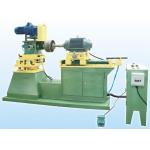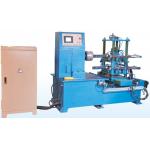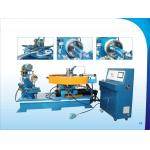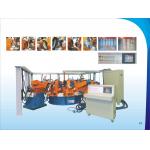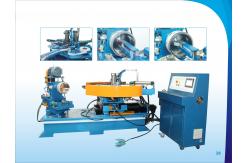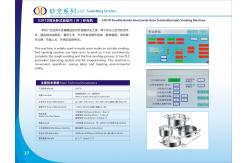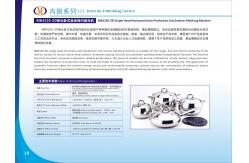This machine is widely used in metal ware inside or outside
sanding.
Two sanding stations can take turns to work so it can continuously
complete the rough sanding and the fine sanding process. It has PLC
automatic operating system and NC programming. This machine is
convenient operation, saving labor and keeping environmental
safety.
The cookware polishing machine is usually composed of a motor, a
polishing wheel, a control system, and the like. After starting the
machine, the motor drives the polishing wheel to rotate at a high
speed.
Place the cookware that needs to be polished in an appropriate
position and make contact with the high-speed rotating polishing
wheel. The polishing wheel is usually attached with polishing
materials such as sandpaper and polishing paste.
Under the rotational friction of the polishing wheel, the rough
parts on the surface of the cookware are gradually removed, making
its surface smooth and flat, thereby achieving the polishing
effect. At the same time, the control system can adjust parameters
such as the rotational speed and pressure of the polishing wheel to
adapt to the polishing needs of different cookware and different
polishing stages. Through continuous friction and trimming, the
cookware finally presents a bright and beautiful appearance. In the
entire process, the operator needs to monitor and adjust according
to the actual situation to ensure the polishing quality and work
safety.
The following are some of the main functions of the kitchenware
polishing machine:
Improving surface quality: Making the surface of kitchenware
smoother and brighter, removing scratches, flaws, etc., and
improving the appearance quality.
Enhancing cleanability: The smooth surface is not easy to be
stained with stains and is easier to clean and maintain hygiene.
Increasing glossiness: Giving good gloss to kitchenware and making
it more attractive.
Improving corrosion resistance: To a certain extent, enhancing the
resistance ability of the surface of kitchenware to corrosion
factors.
Improving the touch: Making the touch of the surface of kitchenware
more delicate and comfortable.
Increasing product value: Kitchenware that has been polished often
has higher value and competitiveness in the market.
The working state of the sander usually has the following
characteristics:
High-speed rotation: Its grinding parts usually rotate at a
relatively high speed to achieve the grinding treatment of the
workpiece surface.
Continuous operation: Keep continuous actions during the working
process and continuously carry out sanding operations.
Generating friction: Contact with the workpiece surface and
generate friction to remove excess materials or make the surface
flat and smooth.
Accompanied by vibration: There may be a certain degree of
vibration when running.
Heating phenomenon: Due to friction and other reasons, a certain
amount of heat may be generated.
Dust flying: Dust and other particulate matter will be generated
during the sanding process, which may cause a certain amount of
dust.
